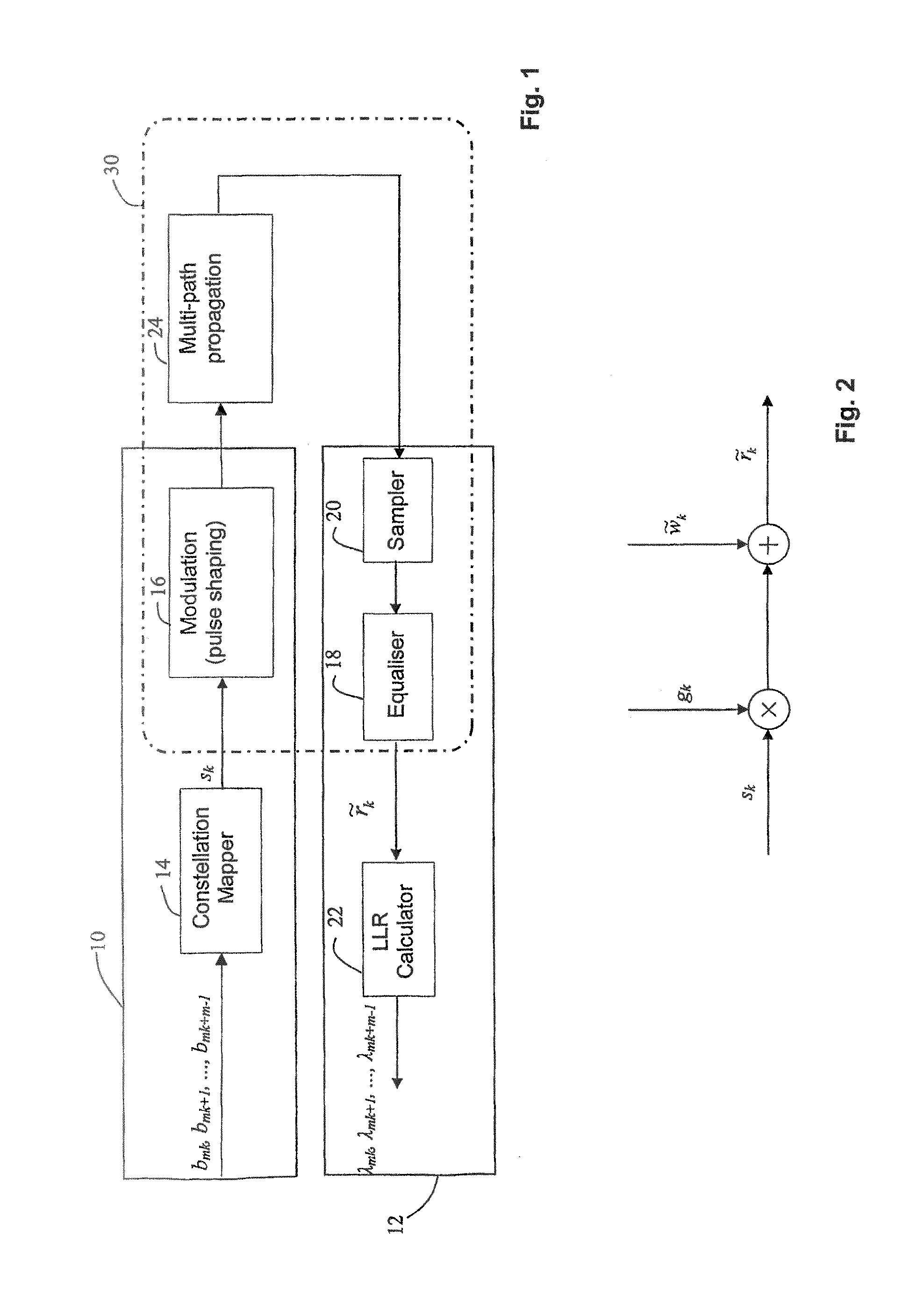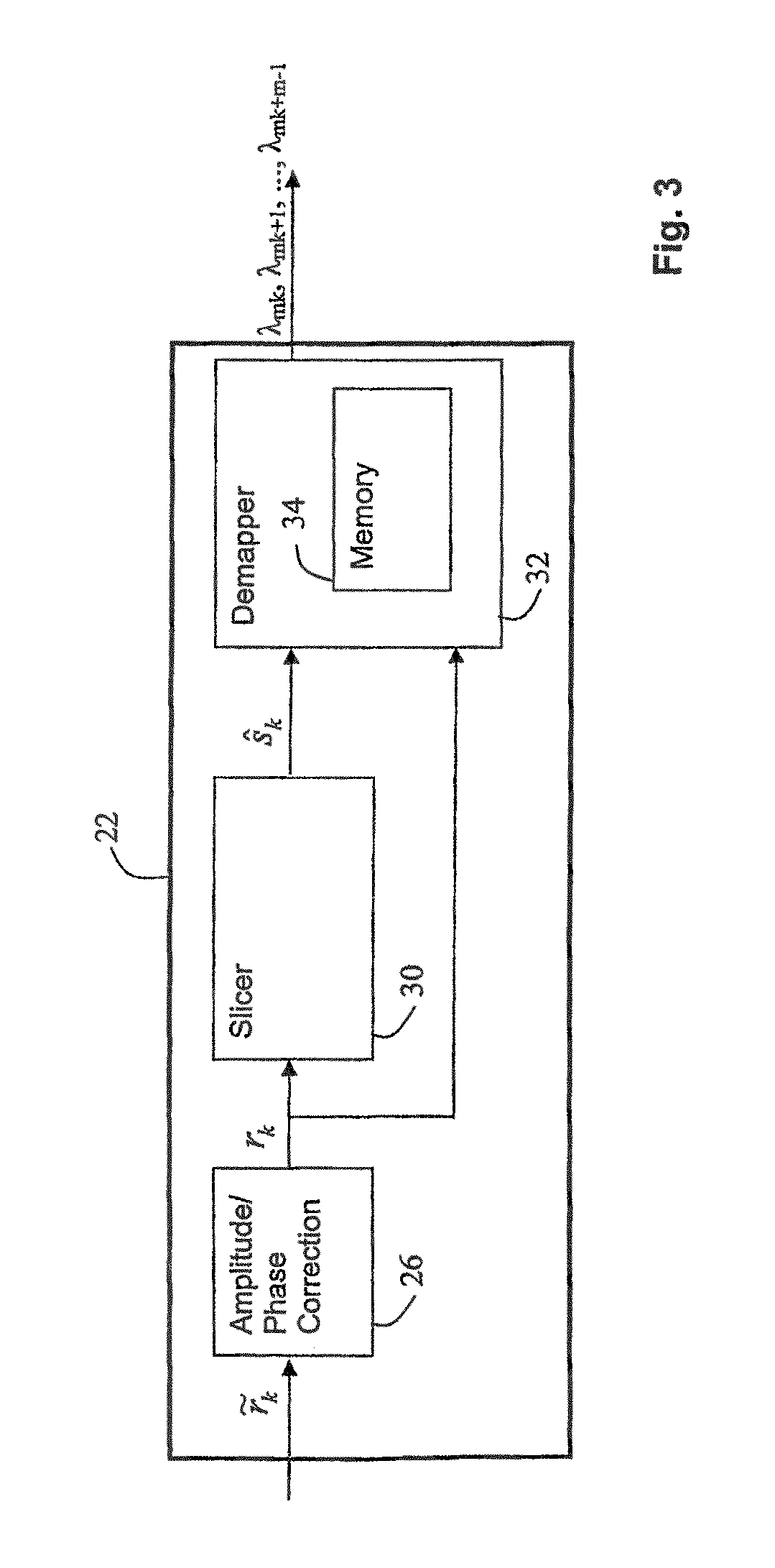Method and apparatus for performing log-likelihood calculations
a technology of loglikelihood and computation method, which is applied in the field of computation of loglikelihood ratio, can solve the problems of computational complexity, computational complexity, and inability to accurately predict the effect of loglikelihood ratio, and achieve the effect of reducing the computational complexity of generating loglikelihood ratio
- Summary
- Abstract
- Description
- Claims
- Application Information
AI Technical Summary
Benefits of technology
Problems solved by technology
Method used
Image
Examples
Embodiment Construction
[0006]Embodiments of the invention provide for a method for deriving one or more coefficients, said coefficients being for use in a calculation of log-likelihood ratios of bits of an estimated transmitted symbol of a predetermined constellation diagram, said constellation diagram being any one of a plurality of constellation diagrams, said method comprising the steps of:
(a) for a bit of a symbol of said constellation diagram, determining a closest further symbol, wherein said further symbol has a complementary value for a corresponding bit; and
(b) deriving said one or more coefficients with reference to said symbol and said further symbol.
[0007]Embodiments of the invention are able to derive one or more coefficients used in calculating a log-likelihood ratio of bits of an estimated transmitted symbol of a predetermined constellation diagram where the constellation diagram is any one of a plurality of constellation diagrams. Therefore, the method of these embodiments is equally appli...
PUM
 Login to View More
Login to View More Abstract
Description
Claims
Application Information
 Login to View More
Login to View More - R&D
- Intellectual Property
- Life Sciences
- Materials
- Tech Scout
- Unparalleled Data Quality
- Higher Quality Content
- 60% Fewer Hallucinations
Browse by: Latest US Patents, China's latest patents, Technical Efficacy Thesaurus, Application Domain, Technology Topic, Popular Technical Reports.
© 2025 PatSnap. All rights reserved.Legal|Privacy policy|Modern Slavery Act Transparency Statement|Sitemap|About US| Contact US: help@patsnap.com



